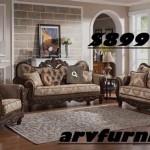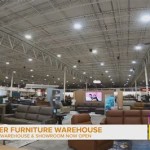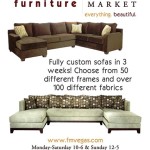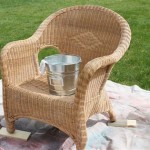Glow In The Dark Furniture: A Luminescent Revolution in Interior Design
Glow in the dark furniture represents a fascinating intersection of functional design and captivating aesthetics. Shifting beyond mere novelty, this type of furniture offers practical benefits alongside its visual appeal, providing both ambient lighting and enhanced safety in low-light environments. This article will explore the various aspects of glow in the dark furniture, including its underlying technology, the materials used in its construction, its diverse applications, and the safety considerations associated with its use.
The Science Behind the Glow: Phosphorescence and Beyond
The functionality of glow in the dark furniture hinges on the phenomenon of phosphorescence. Phosphorescence is a type of luminescence where a substance absorbs energy and then slowly releases that energy in the form of light. Unlike fluorescence, which emits light only while being exposed to the energy source, phosphorescent materials continue to glow for a significant period after the energy source is removed. This prolonged emission is what allows glow in the dark furniture to provide illumination without continuous external power.
Historically, zinc sulfide was commonly used as the phosphorescent material. However, modern glow in the dark furniture predominantly utilizes strontium aluminate. Strontium aluminate offers several advantages over zinc sulfide. It is significantly brighter, glows for a much longer duration (often lasting for several hours), and is considerably less toxic. The strontium aluminate is typically doped with rare earth elements such as europium, which enhances its phosphorescent properties.
The process works as follows: light energy, typically ultraviolet or visible light, excites the electrons in the strontium aluminate crystals. These excited electrons jump to a higher energy level. As they return to their original energy level, they release the absorbed energy as photons, which are particles of light. The gradual release of these photons is what creates the characteristic glow. The intensity and duration of the glow depend on the quality of the strontium aluminate, the amount of dopant used, and the intensity and duration of the light exposure that charges the material.
Different colors of glow are achieved by varying the dopant elements used in the strontium aluminate. For example, europium doping typically results in a green or blue-green glow which is the most common due to its high brightness and long afterglow. Other rare earth elements can produce colors such as blue, yellow, or orange, although these may be less common due to their potentially lower luminosity and duration.
Materials and Manufacturing: Building a Luminescent World
Glow in the dark furniture is not simply made of phosphorescent materials alone. Instead, the phosphorescent pigment, typically strontium aluminate, is incorporated into a variety of base materials. The choice of base material depends on the intended application, the desired aesthetic, and the required durability of the furniture piece.
One common approach is to incorporate the phosphorescent pigment into resins such as epoxy or polyurethane. These resins can then be molded into various shapes, creating glow in the dark tables, chairs, or decorative elements. The resin provides a durable and waterproof matrix that protects the phosphorescent pigment and allows for a smooth and aesthetically pleasing finish. The concentration of the pigment within the resin is crucial - higher concentrations typically result in a brighter and longer-lasting glow, but excessively high concentrations can compromise the structural integrity of the resin.
Another method involves incorporating the phosphorescent pigment into glass or acrylic. This can create stunning visual effects, particularly when the light is refracted through the glass or acrylic. Glow in the dark glass tiles, countertops, or decorative panels can add a unique and sophisticated touch to any interior space.
In some cases, the phosphorescent pigment is applied as a coating to existing furniture. This is a more economical option, but it may not be as durable as incorporating the pigment directly into the material. The coating typically consists of a clear sealant mixed with the phosphorescent pigment, which is then sprayed or brushed onto the surface. This method is often used for adding glow in the dark accents to existing furniture pieces or for creating glow in the dark designs on walls or ceilings.
Furthermore, textiles can be infused with glow in the dark threads or printed with glow in the dark inks. This opens up possibilities for glow in the dark cushions, blankets, or even glow in the dark upholstery. These textiles offer a subtle yet effective way to incorporate phosphorescence into a living space.
Applications and Benefits: Illuminating Functionality and Style
The applications of glow in the dark furniture extend far beyond mere novelty. Its capacity to provide ambient lighting and improve safety in low light conditions makes it a practical addition to various environments, from residential homes to commercial spaces.
In residential settings, glow in the dark furniture can be used to create a calming and inviting atmosphere in bedrooms, nurseries, and living rooms. Glow in the dark nightstands, lamps, or wall decorations can provide a gentle source of light that helps children feel secure at night. Glow in the dark pathways or stairs can improve safety by illuminating potential hazards, particularly for elderly individuals or those with impaired vision.
In commercial spaces, glow in the dark furniture can be used to enhance the ambiance of bars, restaurants, and nightclubs. Glow in the dark tables, chairs, or bar counters can create a visually striking and memorable experience for patrons. Additionally, glow in the dark signage can be used to guide customers to restrooms, emergency exits, or other important areas.
Beyond aesthetics, glow in the dark furniture can also contribute to energy efficiency. By providing a source of ambient light, it can reduce the need for traditional lighting fixtures, thereby lowering energy consumption and reducing electricity bills. This is particularly beneficial in environments where artificial lighting is frequently used, such as offices or retail stores.
Furthermore, glow in the dark materials find applications in safety equipment. Emergency exit signs often utilize phosphorescent materials to ensure visibility during power outages. Similarly, glow in the dark tape or paint can be used to mark steps, doorways, and other potential hazards in emergency situations. The ability to glow without relying on electricity makes phosphorescent materials a critical component of many safety systems.
Safety and Considerations: Responsible Illumination
While glow in the dark furniture offers numerous benefits, it is important to consider the safety aspects associated with its use. The primary safety concern revolves around the potential toxicity of the phosphorescent materials. While modern strontium aluminate is significantly less toxic than its predecessors, it is still essential to ensure that the furniture is manufactured using high-quality materials and that the phosphorescent pigment is properly encapsulated within a durable and non-toxic matrix.
Consumers should look for products that have been tested and certified by reputable organizations to ensure that they meet safety standards. These certifications typically indicate that the product has been tested for heavy metals, volatile organic compounds (VOCs), and other potentially harmful substances.
Another consideration is the potential for allergic reactions. Some individuals may be sensitive to certain chemicals used in the manufacturing process, such as the resins or sealants. It is advisable to check the product labeling or to consult with the manufacturer to determine if the furniture contains any known allergens.
Proper disposal of glow in the dark furniture is also important. While strontium aluminate is generally considered to be non-hazardous, it is still recommended to dispose of it according to local regulations for electronic waste or hazardous materials. This will help to prevent the release of the phosphorescent pigment into the environment.
Finally, it is important to note that the intensity and duration of the glow will gradually decrease over time. This is due to the degradation of the phosphorescent pigment with repeated exposure to light and environmental factors. However, with proper care and maintenance, glow in the dark furniture can retain its luminosity for many years.

Fun Crew Glow Furniture Everything But The Mime

30 Glow In The Dark Furniture To Enlighten Your Spirit

Glow In The Dark Wood Paint Wooden And Like Surfaces Etsy

Led Furniture Decor The Wow Factor Northbrook Il

Glow In The Dark Vondom Pillow Patio Furniture Decoist

Led Sofa And Sectional Sofas With Lights Colorfuldeco

How To Make A Stunning Wooden Table With Glow In The Dark Resin Infill

How To Throw A Memorable Classical Party With Led Furniture

Led Furniture Set Double Event Rentals Miami

Led Plastic Glow Illuminated Light Indoor Outdoor Chair




